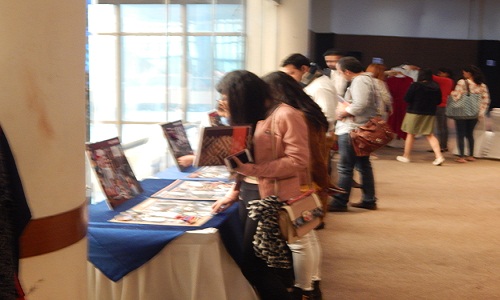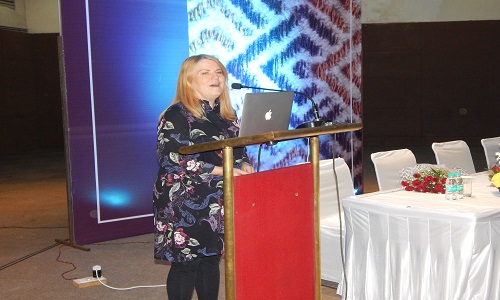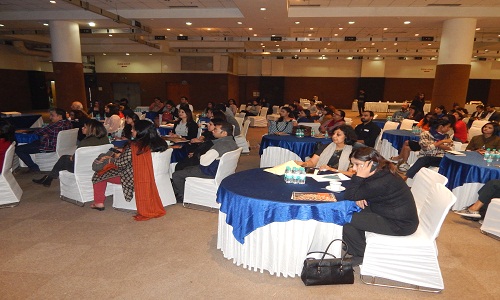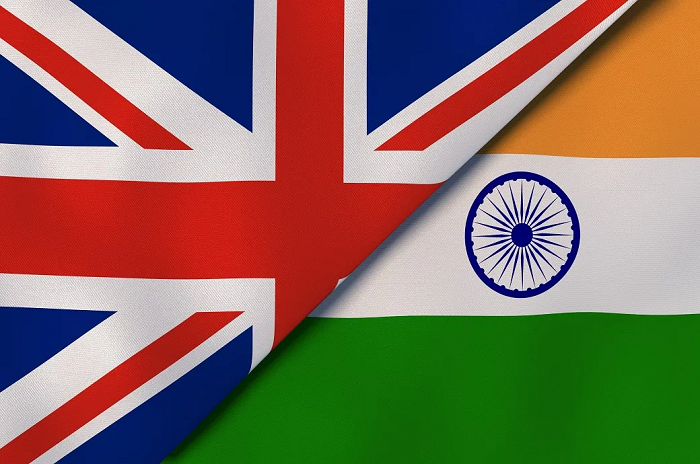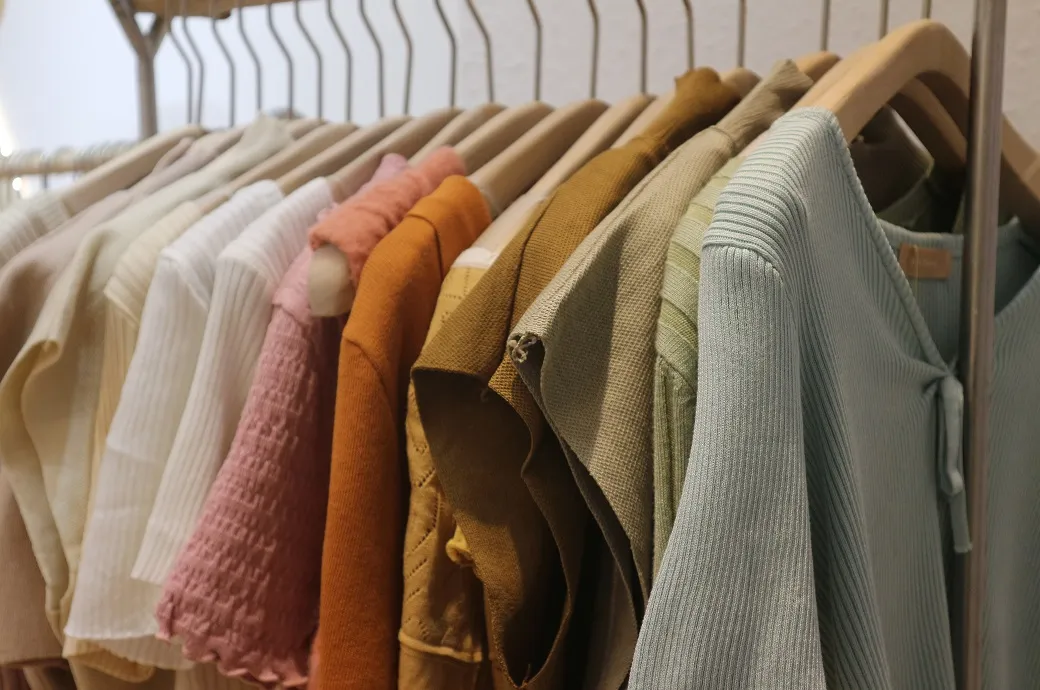FW
The government has launched subsidy schemes to provide financial assistance of up to 90 per cent under the Pradhan Mantri Credit Scheme for powerloom weavers. Under this scheme, the government will provide margin money subsidy of up to 20 per cent of the project cost with a ceiling of Rs 1,00,000 and interest subvention at six per cent per annum for working capital and term loan up to Rs 10,00,000 for a maximum period of five years.
The government has also introduced technology up gradation scheme, Sustainable and Accelerated Adoption of efficient Textile technologies to Help small Industries (SAATHI), to help the country’s ailing powerloom segment.
Ujwal Lahoti, Chairman, Cotton Textiles Export Promotion Council (Texprocil) explains, “This initiative is expected to benefit almost 2.5 million powerloom units, which produce 57 per cent of the total cloth in the country, across India. The use of efficient equipment would result in energy savings and cost savings to the unit owner who would in turn repay in instalments to EESL (Energy Efficient Services Limited) over a three- to four-year period.”
These schemes enable powerloom units to upgrade their technology and install solar power generation equipment to cut energy costs. After repayment of bank loans in around four years, the cost of electricity for power loom units will be zero, say experts. “The Union Textile Ministry and State Governments have announced several promotional schemes for power loom textile industry, but there is hardly any awareness of the schemes in the industry. The maximum benefit of these schemes has been taken by the entrepreneurs of Gujarat and Tamil Nadu” said Kavita Gupta, Textile Commissioner while speaking on the occasion of the buyer-seller meet in Mumbai. Of the 2.5 million powerlooms, 50 per cent are in Maharashtra. There are 108 power loom clusters in the country and 72 textile parks.
The VDMA Textile Machinery Association has accomplished successful events for the textile industries in the US and Mexico. Over 80 decision-makers from the US textile, nonwoven and carpet industry and 25 leading textile machinery and accessories manufacturers participated in the VDMA textile machinery conference held this month in Charlotte (NC). The two-day event in November in Mexico City attracted nearly 450 customers and 30 textile machinery and accessories manufacturers, making it one of the most successful events of the VDMA Textile Machinery Association ever.
The conference in Mexico City was addressed by José Cohen Sitton, President, National Chamber of the Textile Industry CANAINTEX, who said German textile machinery and engineering are one of the best in the world and added that the Mexican textile industry has to invest to be on top of technology no matter what the outcome of the on-going NAFTA negotiations are.
These two events focused on customers, training session at the Instituto Politécnico Nacional (Escuela Superior de Ingeniería Textil) in Mexico City held in November aimed at future engineers. About 500 textile engineering students followed the technical presentations from 18 textile machinery and components manufacturers. In the US and Mexico, VDMA member companies presented latest production technologies from spinning to dyeing and finishing. Major topics addressed were digitalisation of the textile and textile machinery industry, higher efficiency and profitability, energy, water and material savings, new applications with growth potential such as composites and nonwovens, higher quality with measurement, control and testing devices, technical training centres.
In 2018, the VDMA Textile Machinery Association will be supporting sales and marketing of member companies through trade fairs (German pavilions), own technical conferences and B2B as well as official trade missions in the following countries: Indonesia, India, USA, Belarus, Brazil, Uzbekistan, Iran, China, Egypt.
At a time when international trade is set to grow exponentially, the decline in India's export is disquieting and structural changes in labour-intensive sectors such as apparels and jewellery need to be immediately undertaken, Crisil says.
"Global merchandise trade is expected to grow stronger at 4.2 per cent, boosting trade intensity of growth for the first time in six years i.e. world trade growth being higher than world’s GDP growth. Yet, India's exports have not been able to take as much advantage of the stronger trade growth unlike many of its Asian peers like Vietnam, South Korea and Indonesia," said a note released by the rating agency.
The International Monetary Fund (IMF) also forecasts international growth in trade to rise to 3.6 per cent in 2017 from 3.2 per cent in 2016. However, the Federation of Indian Exports Organisations has noted almost Rs 50,000 crore worth of refunds under the Goods and Services Tax regime are still stuck with the Government, leading to a huge blockage of capital.
Exporters have also decried only around Rs 350 crore of refunds on account of integrated GST (IGST) have been released by the Government for July, against Rs 750 crore claimed by exporters. Furthet, the input tax credits are yet to be released. Responding to growing opposition by exporters, the government last week announced greater export support to items in the garment and the home furnishings sector under the Merchandise Exports from India (MEIS) and the Remission of State Levies.
"The enhancement in MEIS rates will help in the fulfilment of orders for the Christmas festival as it will result in easing blocked capital. It will help in the mitigation of the currency difference to some extent. However the Industry is disappointed over the announcement of the RoSL rate as it is far below what the industry has recommended and there has been no consideration of the central taxes rebate in the announcement. The industry is witnessing a slowdown with jobs being lost and buyers migrating due to high cost." Asho K G Rajani, Chairman of the Apparel Export Promotion Council said.
However, Crisil has pointed out that subdued export performance in recent months cannot be attributed to unfavourable currency competitiveness. In fact, a relatively stable rupee and enhanced international growth suggest that local developments such as GST might have had a greater role to play in the current export growth slowdown.
The Apparel Export Promotion Council (AEPC) under its awareness initiatives program kick-started the first series of Fashion Forecasting Seminars for the financial year 2017-18 in Gurgaon, recently.
The seminars are being organized by AEPC in association with WGSN, the world leading trend forecasting agency. The speaker at the event was Ms. Kim Mannino, Head of WGSN LIVE from WGSN, London office. Kim is very seasoned and experienced professional and has worked for over 30 years in the industry. She has worked with Promostyle for over 20 years and is currently leading the live presentations division of the company. At the presentation, Kim provided insights on Key Commercial Items, colours and trends for AW 18/19 and Textile Trends for SS 19. The AW 18/19 season was divided into 4 broad themes: Thinker, HumaNature, Dark Wonder and Worldhood.
The ‘Thinker’ explored an emerging era of enlightenment where ideas and education were the prized currency. For women’s wear, the focus was on simple, functional designs. The look was preppy, at times awkward and retro, harking back to the rebellious intellectualism of the Beatniks. Comfort dressing was also key, as the boundaries between work and leisure dissolve.
In an era driven by data, ‘HumaNature’ explores the urge to trust our instincts. Natural materials, tactile surfaces and quilted and intricately decorated designs gained prominence. Textiles look at global influences and time-honoured techniques, and layered blankets and salvaged fabrics create pieces that feel both old and new.
Dark Wonder explored the influence of new technologies on fashion. Augmented reality is opening the door to acceptance of more unusual aesthetics and in a world where we can create our own identities, gender fluidity and individuality are embraced. This is a trend that draws on themes of science fiction, escapism and experimentation with the human form.
WGSN's ‘Worldhood’ trend explores an increasingly globalised street culture where influences from around the world are shared and remixed faster than ever. The direction is youthful, expressive and nostalgic. Vibrant colours and clashing patterns are woven together to make familiar looks fresh again and classic items are reimagined in luxury fabrics.
All the above trends were brought to life by 3D ‘moodboards’ developed by WGSN and key commercial items of the season which were developed in-house by WGSNs clients in India.
"More than 1,200 national and international fashion brands will be present at Asia’s largest and most influential fashion fair, Chic Shanghai, from March 14 to 16, 2018. Spread over 100,000 sq. mt. of exhibition space in the world’s largest exhibition center, the National Exhibition & Convention Center, Shanghai. China’s economy is back on track after seven years with 6.9 per cent growth in 2017; Chinese consumers are optimistic about the future, with more millionaires in China in 2018 than in any other country, says a recent McKinsey study. By 2025, their share is expected to account for 44 per cent of purchases in the global luxury market, which is equivalent to around €131 billion. "

More than 1,200 national and international fashion brands will be present at Asia’s largest and most influential fashion fair, Chic Shanghai, from March 14 to 16, 2018. Spread over 100,000 sq. mt. of exhibition space in the world’s largest exhibition center, the National Exhibition & Convention Center, Shanghai. China’s economy is back on track after seven years with 6.9 per cent growth in 2017; Chinese consumers are optimistic about the future, with more millionaires in China in 2018 than in any other country, says a recent McKinsey study. By 2025, their share is expected to account for 44 per cent of purchases in the global luxury market, which is equivalent to around €131 billion. In general, willingness to spend money has returned, which is also noticeable among middle to upper income groups. Quality is more important than quantity.
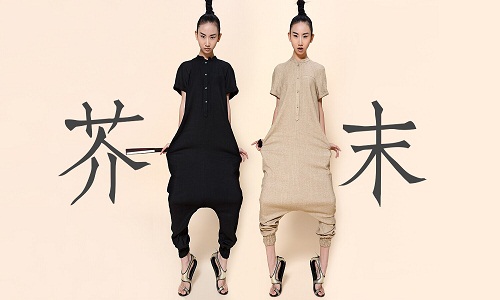
Expenditure on the ‘key desires’ in China is rising, and the supply of these goods is to be increased. However, sustainability and health have become a key issue for consumers. The desire for individual offers and collections will be taken into account by Chic: the area of young design is extended and renewed; the retail sector, which focusses on lifestyle concepts and exclusive and creative brands, the multi-brand stores and boutiques have been targeted and have become co-operation partners of Chic.
Chic segments
The entire North Entrance Hall of the fair is dedicated to fashion design. Impulses is fully booked and will occupy the entire area. Renowned Chinese designers such as MU by Frank, Hua Mu Shen and Tuffcan will show latest collections. Likewise Wang Yutao, former Elle style ambassador and winner of China’s most important fashion award Jin Ding, and Shi Jie with his Shi Jie & Janique collection who exhibits internationally at designer forums in Paris. The Impulses area has been redesigned to provide the fashion clientele with a vibrant, creative fashion ambience. In the menswear Urban View, Shandong Ruyi, one of the largest fashion companies in China, is represented at Chic with the Saint Angelo line, as is the Semir Group with its brand Gson. Bespoke brands like Dalian Longsheng or Haisibao from Shandong also exhibit here.
Country pavilions
In the international Fashion Journey segment, 248 exhibitors from 14 nations use Chic as a presentation and service platform for their entry into the Chinese consumer market or the expansion of their business fields. The largest participation is traditionally from Italy, in March 40 brands in cooperation with Sistema Moda Italiana and Assocalzaturifici and the Italian Trade Agency ITA, which supports the participation with accompanying promotional measures. “We are putting a lot of energy into preparing this latest rendezvous with La Moda Italiana@Chic so as to build up an offering of brands and companies characterised by the selection and quality of their products in order to offer as complete as possible a panorama of the style expressed by Italian fashion. In addition, thanks to the contribution of Agenzia ICE, we will be realising an even more strategic presentation of the Italian area: at the centre of the exhibition route and in the heart of the international pavilion, featuring an elegant and functional layout to provide a united and coherent image of the Italian lifestyle,” said Alberto Scaccioni, CEO, EnteModa Italia.
Diversity distinguishes French fashion brands, which are gathered in the pavilion Paris Forever with clothing, accessories, shoes and bags, including brands like Georgio & Mario, Urbahia, Lener Cordier, etc. German companies present themselves under the umbrella of Made In Germany as part of the foreign trade fair program of the Federal Ministry for Economic Affairs and Energy, conducted by Messe Düsseldorf. The Polish Investment and Trade Agency is for the first time with a country presentation to promote ‘Fashion from Poland’ in China and uses Chic’s widespread network inside the Chinese trade. South Korea, China Hong Kong, China Taiwan, and Peru are represented with their own group holdings. Individual exhibitors come from Brazil, Denmark, France, China Hong Kong, India, Japan, Korea, Sweden, and the UK.
Enhanced service measures
Chic would place a special focus on visitor marketing. In the run-up to the trade fair, match-makings will be carried out especially focussed on overseas exhibitors, and a selected clientele of almost 50,000 contacts will receive detailed information about the international brands at Chic; the Chic App enables visitors to find out about the offer at the fair in a targeted manner; the Chic homepage offers visitors the opportunity to arrange appointments with the manufacturers at the trade fair. The traditional overseas exhibitors’ dinner will give further insights into the market with agents of international brands that are established in China sharing their experience.
Sanjay K Jain, Chairman, CITI has welcomed the decision to enhance export incentives for garment and made ups sectors under the Merchandise Export from India Scheme (MEIS) and Rebate of State Levies (RoSL) to check the fall in export of textile products.
The Ministry of Commerce has enhanced export incentives from 2 to 4 per cent for the garment and made up sectors under MEIS; also, under RoSL, the government has increased the refund of state levies on the average of 0.5 per cent. Jain says CITI had highlighted the issue of declining textile exports in its recent representations to the Ministry of Textiles, Ministry of Commerce and Ministry of Finance and requested the government to take immediate steps to support the textile sector by increasing export incentives under MEIS, Drawback and RoSL.
He further states textile industry issues are not yet resolved and it needs further support from the government to support the entire value chain — as no relief was provided to the yarn and fabric sector — to ensure holistic growth of the textile industry. Even in garments and made ups, the overall incentives and refund of duties on exports is still about 3 per cent less than pre GST levels. The Indian cotton yarn sector is seriously affected by the lower demand from domestic and international markets, besides, fabric sector, which is also the weakest link of the value chain, is also taxed by the high Central and state levies.
The country’s cotton yarn exports this year till August is 29 per cent lower than last year. Jain feels the government should immediately address unresolved issues of the textile sector to make the sector globally competitive. The sensitiveness of the government to the industry’s problems is encouraging and gives them the confidence to grow strongly by enhancing capacities and making inroads in various international markets.
Performance Days, a leading platform for functional sports and work wear fabrics, announced the launch of the US Functional Fabric Fair spearheaded by Performance Days, in partnership with Reed Exhibitions. The sourcing event for high performance functional fabrics and accessories will be held during the New York Market Week from July 23rd and 24th, and co-located with multiple fashion market events at the Javits Center.
Steve McCullough of Reed Exhibitions informs, “Following the successful launch of a performance and sports textile sourcing program within the PGA Merchandise Show and through considerable industry research, a need for a US-based functional fabric fair has become apparent. The biannual Performance Days Functional Fabric Fair in Germany is the gold standard of the industry and we are especially pleased to organise the US event in cooperation, maximising their breadth of proven expertise to deliver a fair where tomorrow’s textile trends are on display today,” he added.
Marco Weichert, GM of Design & Development GmbH Textile Consult averred, fashion and function inspire each other more and more in our industry. This inaugural US Functional Fabric Fair powered by Performance Days is the first of its kind during New York’s Market Week to provide an opportune sourcing platform for performance materials and technical textiles in fashion, sportswear and athleisure collections.
The Fair will display the latest trends in fabric development for the functional textiles industry and provide an opportune marketplace in the US for the sourcing of high performance functional fabrics and accessories. The event will include exhibits, workshops, industry presentations, professional networking and matchmaking programmes.
Textiles manufacturers, suppliers and service providers will present their functional fabrics, membranes plus treatments, laminates, paddings, finishes, and accessories such as yarns, tapes, prints, buttons and zippers. Industry giants who are expected to attend include sports fashion designers, product managers, purchasing agents and textile decision makers representing active clothing and functional wear manufacturers.
The Tirupur Exporters Association (TEA) welcomed the government's move to enhance Merchandise Exports from Indian Scheme (MEIS) from 2 to 4 per cent. The association further requested the Centre to come up with a solution for the shortfall of 2.7 per cent incentives given to readymade garments and made ups post GST regime. Knitwear makers had raised concerns about cash crunch and deficit in government incentives post-GST as they felt recent developments had badly affected the industry.
They made several representations to the FM to clear the incentive deficit. Following this, the government increased Merchandise Exports from Indian Scheme from 2 per cent to 4 per cent for a seven months beginning November.
T R Vijayakumar, General Secretary of Tirupur Exporters Association says, the announcement has given much needed relief to the knitwear garment export sector. After the introduction of GST, government incentives given to the readymade garments took a different turn. Major incentives, including duty drawback, was drastically reduced. Total incentive rates were reduced to 8.7 per cent from 13.40 per cent and there is a deficit of 4.7 per cent. With the government's announcement of increasing the Merchandise Exports from Indian Scheme, the deficit has been reduced to 2.7 per cent, he added.
Association president Raja M Shanmugam has requested the government to incorporate the embedded tax and also announce revised remission of state levies (RoSL) and duty drawback rates, as government support was needed to enhance apparel exports.
The government has increased the Merchandise Export from India Scheme (MEIS) from 2 per cent to 4 per cent for all garments and made-ups and also increased the upper limit of Remission of State Levies (RoSL) for exports of cotton garments from 1.22 to 1.7 per cent and cotton made-ups from 1.55 per cent to 2.20 per cent. With respect to MEIS, the government has allocated Rs 1,143.15 crores for the year 2017 to 18 with effect from November 1 and Rs 685.89 crores for up to June 30, 2018 -19 to encourage employment generation.
P Nataraj, Chairman, The Southern India Mills’ Association (SIMA) has welcomed the move. However, he said the industry was expecting at least 2 to 3 per cent increase in the RoSL rates considering the various embedded/ blocked taxes of Central & State levies. He hoped that the government would consider the remaining embedded taxes while announcing revised duty drawback rates and ensure the same level of competitiveness that the industry had under special export garment package to enable the exporters to retain existing customers and remain competitive globally.
Nataraj says the drawback and RoSL rates notified after the implementation of GST are only interim relief as these benefits have not considered various embedded taxes and also inverted duty on fabric stage. He points out that several garment and made-ups exporting units have already curtailed their production by 20 to 30 per cent keeping several lakh of people out of jobs. He has appealed to the government to announce new duty drawback rates without further delay with effect from October 1, 2017 so that the financial stress caused to exporters could be minimised.
The government has announced post-GST rates for claiming rebate of state taxes under the scheme for Remission of State Levies (RoSL) on exports of readymade garments and made-ups to enhance exports. The government has also doubled the rates for incentives under an export promotion scheme MEIS to 4 per cent for readymade garments and made-ups.
Union textiles minister Smriti Irani in a series of tweets said post-GST rates for remission of state levies/taxes and enhanced Merchandise Exports from India Scheme (MEIS) rates will boost exports of garments and made-ups. “Announcement on post-GST rates of RoSL will be effective from 1 Oct 2017. Post-GST rates for remission of state levies/taxes will boost exports of garments and made-ups,” Irani tweeted. In another tweet, the minister wrote enhanced MEIS rates will boost exports of garments and made-ups from India.
AEPC was relieved that the increase in MEIS rates will help ensure fulfilment of orders for the Christmas season as it will help in releasing blocked capital. In a release, the Textiles Ministry said post-GST rates of RoSL are up to a maximum of 1.70 per cent for cotton garments; 1.25 per cent for MMF, silk and woolen garments; and 1.48 per cent for blended apparel.
The Ministry said the notification of post-GST RoSL rates for rebate of state levies/taxes is following the decision of the government to enhance exports and employment generation in the labour intensive textiles and apparel segment.
The Directorate General of Foreign Trade (DGFT) has enhanced rates for garments and made-ups to 4 per cent of value of exports from 2 per cent under MEIS. New MEIS rates are effective from November 1. Under the MEIS scheme, the commerce ministry gives duty benefits to several products. It provides duty benefits at 2 per cent, 3 per cent and 5 per cent depending upon the product and country. The DGFT said the rates for incentives under MEIS for two subsectors of textiles industry — readymade garments and made-ups — have been raised to 4 per cent of value of exports with effect from November 1 till June 30 next year.

